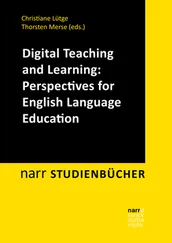LOSCHKY/BLEY-VROMAN (1993) differentiate between three different kinds of what they call ‘structure-based communicative’ task design. The first kind of task design is ‘task-naturalness’, meaning that the target structure may arise naturally when the learners are doing the task. However, different structures could be used alongside the target structure. LOSCHKY/BLEY-VROMAN give the example of a task involving a travel itinerary, where the natural use of the simple present is targeted (“you arrive in London at 5.30 pm”), but where the learners could replace this structure by a will -form or a going-to -form and still produce grammatically correct sentences. The second kind of task design relates to ‘task-utility’, meaning that although a specific form is not strictly necessary for completing the task it is nevertheless ‘useful’. The example that the authors provide relates to prepositions and to the fact that although these are not strictly necessary to describe a picture in detail, they are nevertheless quite useful for this activity. Finally, the third kind of task design relates to ‘task essentialness’ and refers to the fact that learners absolutely have to use the targeted structure in order to complete the task and that therefore the structure is the essence of the task. The authors admit, however, that this may only be achievable in receptive tasks as there is no way to absolutely force the learners to use a specific structure. It has to be added that these two authors suggest that such structure-based communicative tasks are useful for automatizing existing knowledge, i.e., that they are not meant for the introduction of a new grammar phenomenon.
This issue is seen quite differently in the present book, as all of the examples in the second part of the book relate to the introduction of new grammatical constructions, keeping in mind that the purpose of grammar learning is not just learning about grammar but also the practical use of the learners’ grammar knowledge. Although it is true that learners cannot be forced to use a specific structure and that, furthermore, not all learners react in the same way to a task, the likelihood that they will indeed use the structure in question is quite high if the task is designed adequately and the communicative topic has been adequately chosen as well. As mentioned previously, the teacher’s utterances in the pre-task phase should provide clear input enrichment, i.e., contain the targeted construction in a frequent and salient way, and the chosen communicative topic should be a situation in which the chosen construction is used naturally by native speakers. Such input enrichment can be seen as scaffolding and helps the learners to notice the new structure, but does not make them explicitly aware of it. In the same vein, R. ELLIS (2003: 200) argues that “researchers have given theoretical grounds for claiming that if learners are led to use a specific structure through scaffolded help they are acquiring it”.
What this book does not intend to do is to make a grammatical construction the sole topic of a task, a possibility for designing tasks that was proposed by R. ELLIS (cf. 2003: 162ff.). He suggests to give learners examples of correct and incorrect language and to have them discuss these examples. This is supposed to train their noticing skills and their awareness of the use of a specific grammatical phenomenon. Although a discussion about the language examples can certainly also be seen as communication, it is not a naturally arising conversation that could also be used beyond the classroom. It is rather a variety of linguistic analysis and not the communicatively adequate topic-related use of language that the learners are meant to acquire and practice.
With respect to the issue of consciousness-raising tasks, FOTOS differentiates rigidly between two different types, namely communicative consciousness-raising tasks and grammar consciousness-raising tasks, claiming that whereas the communicative consciousness-raising task
… is ungrammatical, but requires either recognition of the target structure or its use in reaching the task solution, the content of the grammar consciousness-raising task is the target structure itself. Second, the grammar consciousness-raising task is not aimed at developing immediate ability to use the target structure but rather attempts to call learners’ attention to grammatical features, raising their consciousness of them, and thereby facilitating subsequent learners’ noticing of the features in communicative input. (FOTOS 1994: 326)
It is somewhat difficult to see why FOTOS’ two types of task should be so rigidly separated from each other, because the grammatical construction in question should already be a subliminal part of the communicative pre-task. Furthermore, contrary to FOTOS’ belief, the grammar part should not start out by making the learners notice the structure in question but they should already have used it while communicating during the task before their explicit attention is raised towards it in the language focus. Additionally, the learners’ noticing should not only be related to the target structure itself but also to its communicative usage. This once again means that the structure should not only appear in what FOTOS calls “subsequent (…) communicative input” but should already have been used – albeit generally without the learners’ awareness – in the communicative input prior to the language focus. FOTOS seems to fall into the traditional trap of separating communication/lexis and grammar and does not seem to realise that they are actually related and inseparable, although of course the learners’ focus of attention can at certain points in the lesson be directed more towards one pole of the grammar-lexis continuum than to the other.
There are not many studies on the effect that consciousness-raising tasks can have on learners, but those few studies that exist provide support for the use of such tasks in L2 classrooms. For example, FOTOS herself (1994) conducted research on the effectivity of grammar tasks. Her results showed that the learners having been instructed with grammar consciousness-raising tasks outperformed those learners who had received traditional teacher-fronted instruction, not only in immediate post-tests but also in delayed post-tests. This indicates that grammar consciousness-raising tasks are a more powerful teaching tool than traditional formal instruction, but, on the other hand, this does not rule out that the results could have been even more convincing if grammar and communication had not been seen as separated issues and if the communicative aspect of the sample lessons had not been neglected to a certain extent.
ECKERTH could also prove the effectivity of using what he calls consciousness-raising tasks2. In one of his studies, he found that
… consciousness-raising tasks succeeded in generating not only the same amount of speech production, meaning negotiation, and output modification as unfocused tasks, but also extensive individual discursive turns and complex collaborative dialogue. (ECKERTH 2008a: 110)
In other words: such tasks lead to more complex L2 utterances than unfocused, or grammar-free, tasks, as in unfocused tasks the learners “tend to rely on semantically-based communication strategies” (ibid.). In another of his studies, ECKERTH (2008b) could even show that not only the targeted linguistic structure was statistically significantly better acquired by the learners but also other grammatical structures that had not even been targeted, due to the process of meaning negotiation during pair work. Therefore, if the use of focused tasks allows the learners to obviously make linguistic and communicative progress, R. ELLIS’ suggestion of rather using unfocused tasks as the norm (see page 38) can no longer be upheld.
Читать дальше












